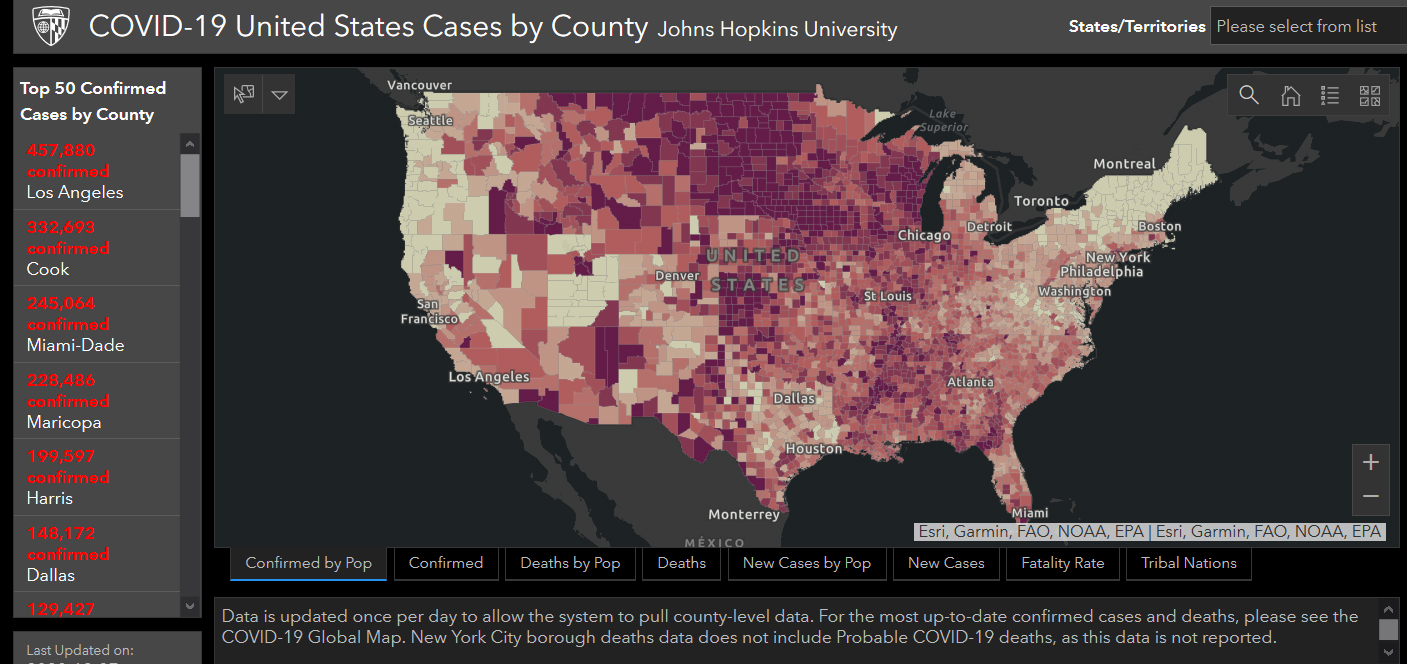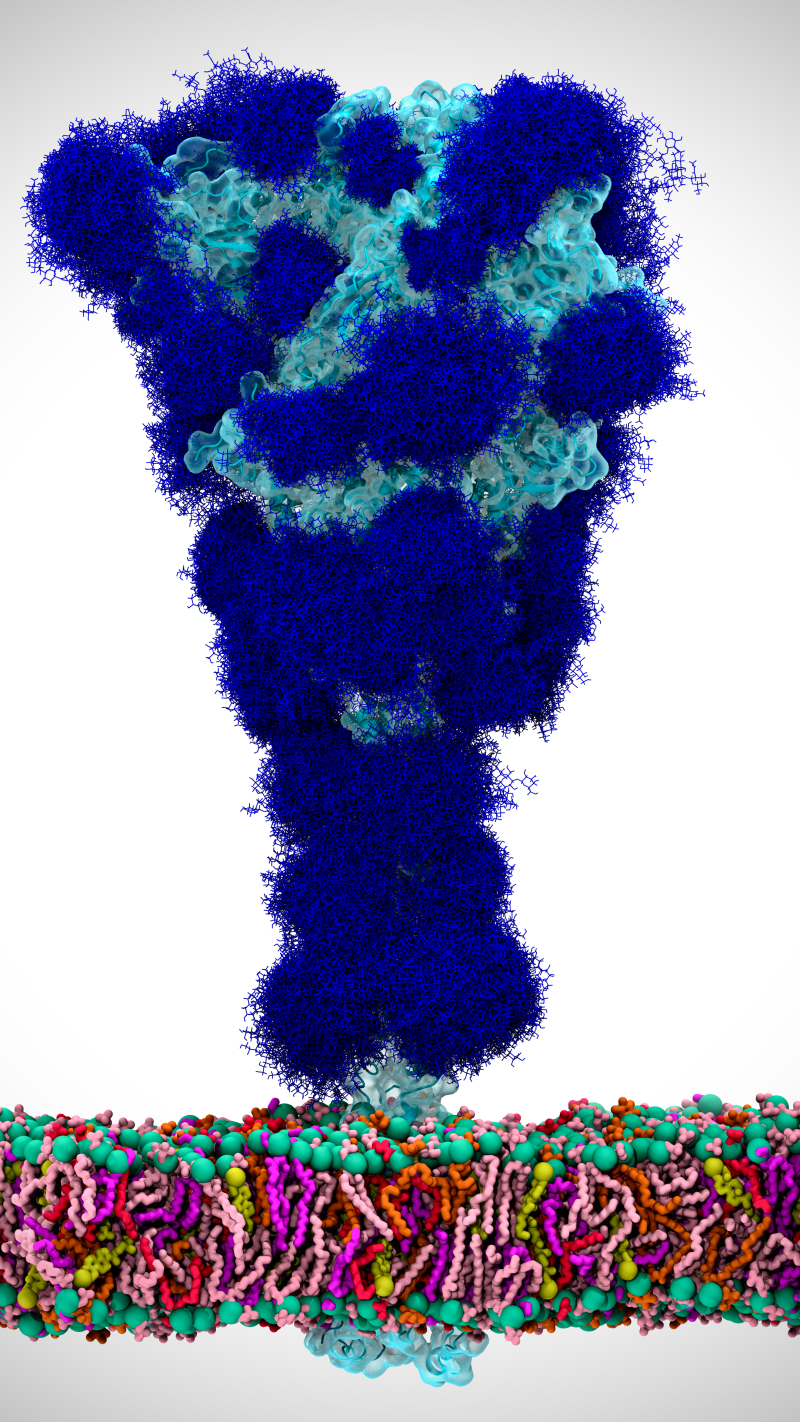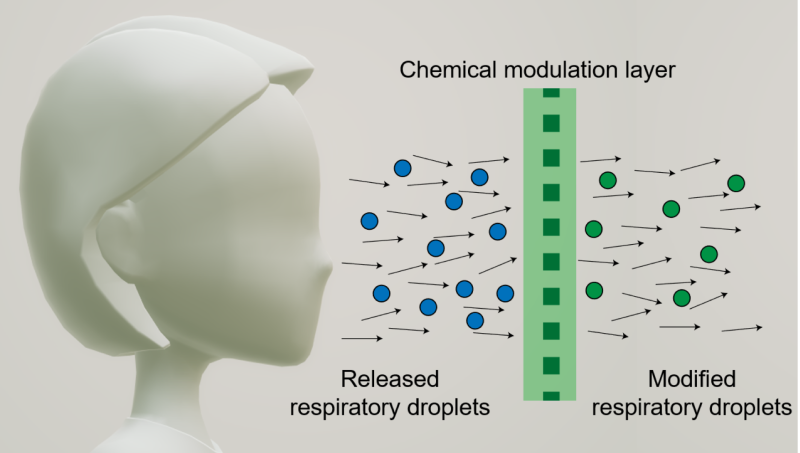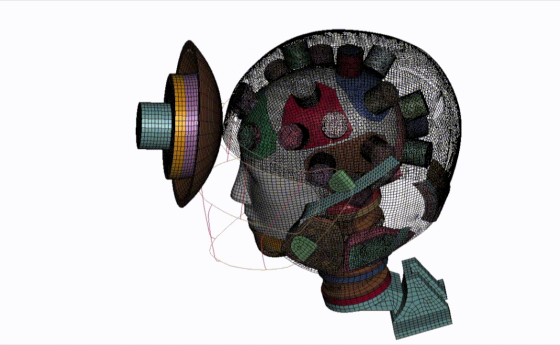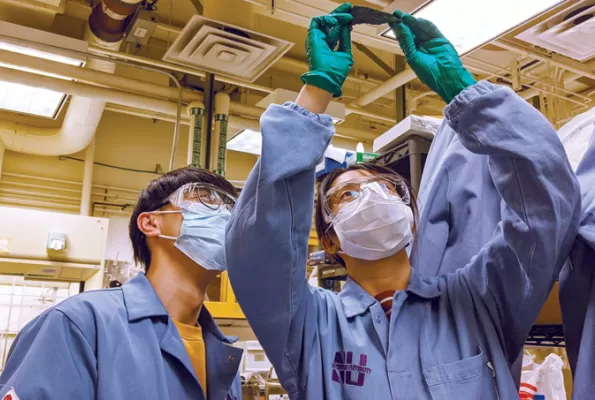
NSF providing critical support in COVID-19 fight
With the COVID-19 pandemic, the United States is facing one of the greatest challenges of its history. Addressing the wide-ranging impact of the pandemic requires the combined efforts of researchers across numerous scientific disciplines. As the only U.S. federal agency that supports fundamental research across all fields of science and engineering, the U.S. National Science Foundation has been an integral part of the response. The foundation has made more than 1,200 awards totaling over $200M to study multiple aspects of the pandemic. With this support, researchers have gained insight into how the virus spreads, developed improved personal protective measures, and are beginning to address the long-range mental health impact of the pandemic.
1. One of the most well-known projects supported by NSF is the Johns Hopkins Coronavirus Resource Center, a leading resource for tracking the state of the pandemic in real-time. All data is freely available to researchers, public health authorities and the public to support evidenced-based decision making. Support from NSF and other organizations keeps the dashboard operating and the development of additional capabilities. The engineering work associated with development can also be applied to future public health events.
2. NSF provided essential support to efforts to quickly identify structural aspects of the SARS-CoV-2 virus to help understand how it functions. A project at the University of California-San Diego leveraged a crowdsourced supercomputing effort to model how the virus binds to human cells. The simulations revealed that molecules called glycans help the virus bind to receptors on human cells. Identifying this activity helped accelerate the development of new treatments. A supercomputing project known as Folding@home identified the atomic makeup of the virus. By linking tens of thousands of home computers to act as a supercomputer, researchers were able to build a simulation of the virus that helped explain its behavior.
3. A priority for many scientists has been studying how the virus spreads in the environment and how to control its transmission. Researchers at the University of Florida discovered that aerosols contain infectious live virus and can travel up to 16 feet. This challenged the initial assumption that a separation distance of 6 feet was safe for social interaction and can help guide decisionmakers in their efforts to return to regular economic and social activities. A project at the Yale School of Environment is studying how the virus travels via streams, rivers and water systems that connect smaller communities and large urban centers. The work will also study whether storms that produce overflow events increase the potential of virus spread.
4. Understanding how the virus spreads aided NSF-funded researchers developing methods to prevent that movement and keep the virus from infecting humans. A team at Virginia Tech is building on the discovery that the virus binds to carbohydrate-based polymers to develop virus-trapping gels and surfaces. NSF-supported research at Northwestern University is intended to design and self-sanitizing medical masks that deactivate the virus on contact. The project is incorporating anti-viral chemicals into a physical barrier that could be added to masks to provide an extra layer of protection for healthcare workers.
5. Another critical area of focus is the development of rapid, inexpensive diagnostic tests that could be widely deployed. Lucira Health was able to use its diagnostic platform developed under NSF grants to quickly create a COVID-19 diagnostic which became the first to receive FDA authorization. The University of Texas at Austin’s Ellington Lab hopes to deploy its GeneTiger system soon. Work at Penn State University is focused on using lasers to detect the virus. Mauricio Terrones, professor of physics, chemistry, and materials science and engineering, believes a technique called Raman spectroscopy can identify the virus more quickly than other methods. A sample of saliva is collected via swab or by a person blowing through a device. The laser than identifies the virus by measuring vibrations that result from shining the light on the sample.
6. Even as vaccines become more available, contact tracing will remain an important part of ending the pandemic. Debra Laefer of the New York University Tandon School of Engineering is developing a model that takes into account human behavior in terms of where people go and how they physically interact with the environment. This will help communities better determine risks at the local level. Ramesh Raskar of the MIT Media Lab, is developing a contact tracing platform that takes privacy into account. SafePaths enables users to see if they crossed paths with someone who was later diagnosed with the virus by comparing GPS and Bluetooth trails from smartphones while protecting the privacy rights of carriers and unexposed citizens.Researchers are also exploring how to help leaders understand the different aspects of the pandemic and make better-informed decisions. A study at Penn State is combining multiple disease forecast models into a single framework to help leaders understand the implications of and make decisions in the face of the growing amount of scientific data. Work at New Mexico Highlands University is using machine learning and artificial intelligence to help decisionmakers slow the spread of the virus in tribal nations. NSF also supports scientists and researchers studying the mental health aspects of the pandemic and its impact on all areas of society, such as how the pandemics is disrupting STEM higher education in the United States and a study modeling mental health consequences across the country.
NSF has played a vital role in jumpstarting the national and international response to the COVID-19 pandemic. The knowledge gained from NSF-supported research will form the foundation of a broad range of solutions that will help contain the virus; help those that are infected recover; and help return daily life to normal. This research will also provide building blocks that put the U.S. in better position to respond to potential future health emergencies. Learn more about NSF’s COVID-19-related projects.



